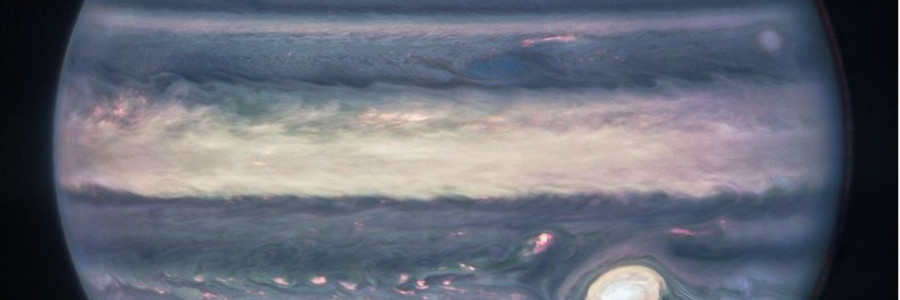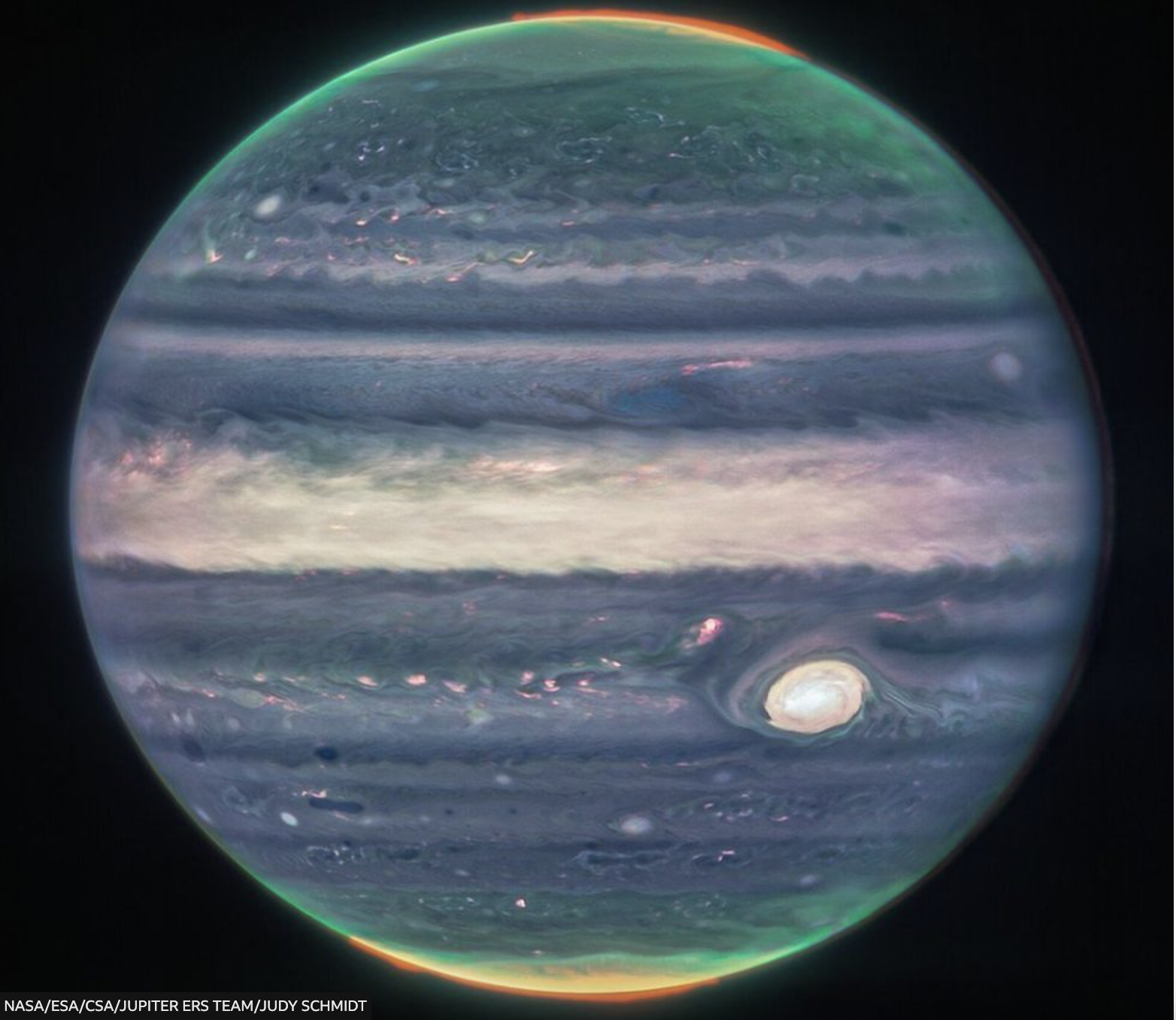
Incredible views of Jupiter

The James Webb Space Telescope (JWST) the World’s largest and most powerful space telescope took infrared images of the Solar System’s biggest planet, Jupiter, in July 2022. The images revealed auroras, giant storms, moons, and rings surrounding Jupiter in detail that astronomers have described as “incredible”. Planetary astronomer Imke de Pater of the University of California, who played a key role in the project, “ We’ve never seen Jupiter like this. It’s all quite incredible. We hadn’t really expected it to be this good, to be honest”.
This £ 8.5bn ($10bn) JWST is an international mission led by the US space agency NASA with its partners from the European Space Agency and the Canadian Space Agency.
NASA’s stand-alone view of Jupiter was created from a composite of several images from the telescope, auroras extended to high altitudes above both the northern and southern poles of Jupiter, Auroras are light shows in the skies above the planet caused by interactions with particles streaming away from the Sun.
JWST, the successor to the famous Hubble telescope, launched in December 2021, is currently positioned one million miles (1.6 million km) from Earth and can detect light that began travelling towards Earth 13 billion years ago, shortly after the Big Bang.
